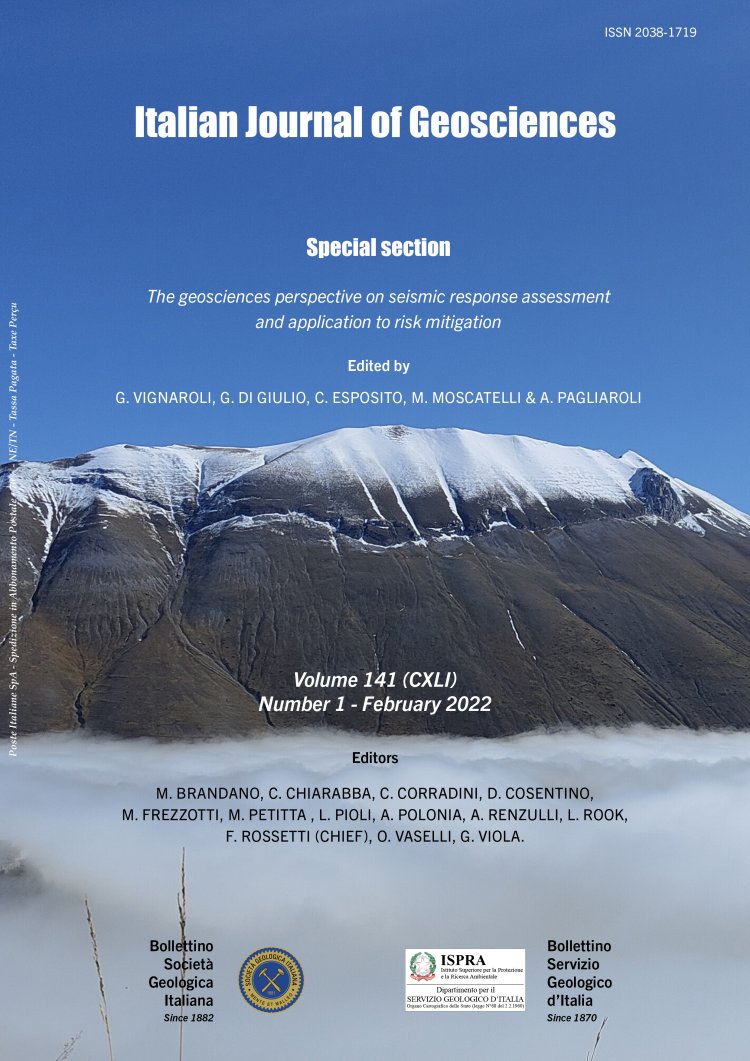

Site-Specific PSHA: Combined Effects of Single-Station-Sigma, Host-to-Target Adjustments and Nonlinear Behavior. A case study at Euroseistest
Claudia Aristizabal1,2, Pierre-Yves Bard1 & Céline Beauval1
1Univ. Grenoble Alpes, CNRS, IRD, IFSTTAR, ISTerre, 38000 Grenoble, France.
2Suramericana S.A., Medellín, Colombia.
Corresponding author e-mail: pierre-yves.bard@univ-grenoble-alpes.fr
Volume: 141 (2022) f.1
Pages: 5-34
Abstract
This study takes advantage of the available information for an example, well-known, site in Greece (TST site at Euroseistest) to illustrate the epistemic variability in probabilistic seismic hazard assessment (PSHA) estimates. The purpose is not to perform an exhaustive site-specific PSHA at this particular site, but to investigate the sensitivity of the results to the approach used for including site effects, from basic ones to more demanding and realistic ones, in order to better appreciate the “benefits” versus the required costs and efforts of each approach. The TST site, located at the center of the Mygdonian basin in North-Eastern Greece is characterised by soft shallow soils over thick, medium stiffness deposits with a complex underground geometry, resting on very hard bedrock. Three different levels are considered for the incorporation of site response, from level 0 (generic or partially generic) to site-specific ones, with linear (level 1) or non-linear (level2) site response analysis. The basic methods rely on one or several site proxies (VS30, VSZ and f0), whereas the most complex ones couple site response assessment (instrumental or numerical, implying site-specific characterization or instrumentation) with various reference rock hazard adjustments (single-station sigma, host-to-target adjustments, depth correction). Results are compared in terms of Uniform Hazard Spectra for a 5000 years return period, a typical value for critical facilities. For each level, the epistemic uncertainties are described and their impacts on hazard estimates are quantified. The use of the VS30 proxy in ground-motion prediction equations (GMPEs) leads to a clear underestimation of the hazard for the linear case (i.e., short return periods), especially around the site fundamental period, because of resonance and basin effects. On the other hand, soil nonlinearity largely impacts the hazard estimates, and linear amplification approach leads to an overestimation of the hazard, with unrealistic high levels at very long return periods. Site- specific hazard estimates for thick, Euroseistest-like sites, with complex geometry and rheology, are thus shown to come up against several additional epistemic uncertainties implying a large approach-to-approach variability. This may lead to increased hazard estimates, counterbalancing the decrease due to the use of reduced, single-site aleatory uncertainty in reference rock hazard estimates. For the time being, it thus looks unrealistic to promise a systematic reduction in hazard estimates with site-specific studies, while it might also indicate that uncertainties in generic hazard estimates could presently be underestimated.
Keywords
Site Effects, Epistemic Uncertainty, PSHA, Single-station-sigma, Host-to-target adjustments, Linear and Nonlinear behavior, Site Response analysis.
Get Full Text Supplementary Material